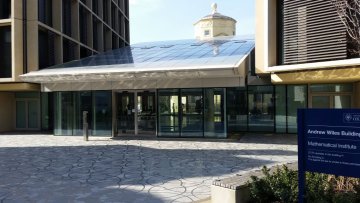Alignment-free sequence and network comparison
Bayesian parameter estimation for stochastic dynamic biological models
Can puzzles self-assemble?
Abstract
A holy grail of nano-technology is to create truly complex, multi-component structures by self assembly.
Most self-assembly has focused on the creation of `structural complexity'. In my talk, I will discuss `Addressable Complexity': the creation of structures that contain hundreds or thousands of
distinct building blocks that all have to find their place in a 3D structure.
Gene regulatory systems under epigenetic regulation: robustness, noise-enabled bifurcations, and cellular reprogramming
The Norwegian Academy of Science and Letters has decided to award the Abel Prize for 2016 to Sir Andrew J. Wiles (62), University of Oxford, “for his stunning proof of Fermat’s Last Theorem by way of the modularity conjecture for semistable elliptic curves, opening a new era in number theory.”
Loop Groups, K-theory and Noncommutative Geometry
Abstract
We describe the representation theory of loop groups in
terms of K-theory and noncommutative geometry. For any simply
connected compact Lie group G and any positive integer level l we
consider a natural noncommutative universal algebra whose 0th K-group
can be identified with abelian group generated by the level l
positive-energy representations of the loop group LG.
Moreover, for any of these representations, we define a spectral
triple in the sense of A. Connes and compute the corresponding index
pairing with K-theory. As a result, these spectral triples give rise
to a complete noncommutative geometric invariant for the
representation theory of LG at fixed level l. The construction is
based on the supersymmetric conformal field theory models associated
with LG and it can be generalized, in the setting of conformal nets,
to many other rational chiral conformal field theory models including
loop groups model associated to non-simply connected compact Lie
groups, coset models and the moonshine conformal field theory. (Based
on a joint work with Robin Hillier)
Thurston and Alexander norms, and the Bieri-Neumann-Strebel invariants for free-by-cyclic groups
Abstract
We will introduce the Thurston norm in the setting of 3-manifold groups, and show how the techniques coming from L2-homology allow us to extend its definition to the setting of free-by-cyclic groups.
We will also look at the relationship between this Thurston norm and the Alexander norm, and the BNS invariants, in particular focusing on the case of ascending HNN extensions of the 2-generated free group.



